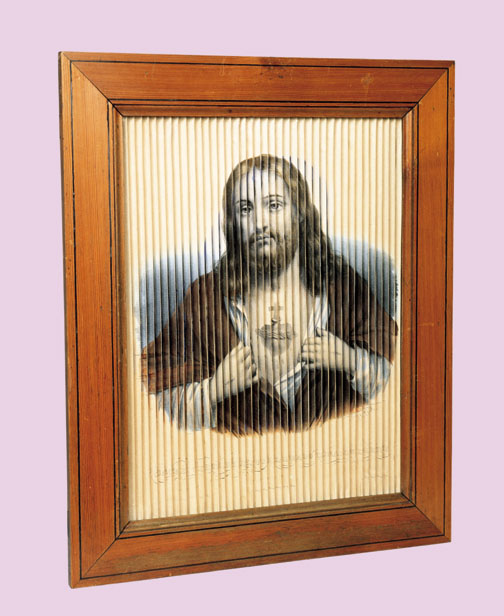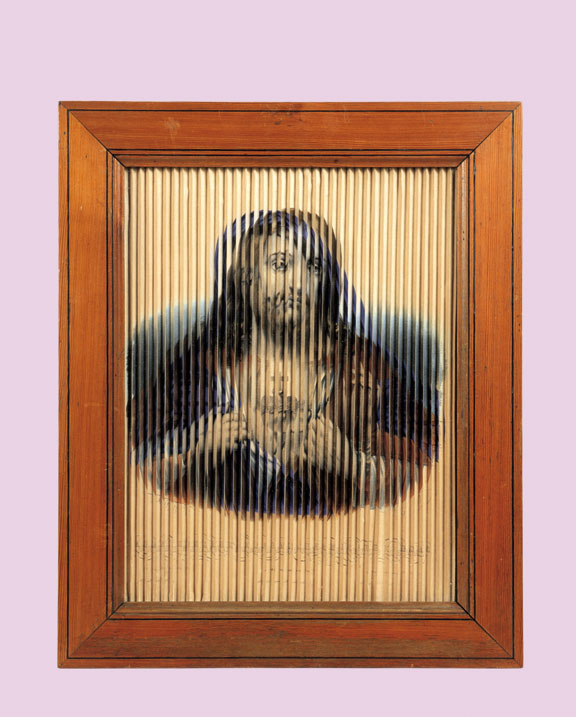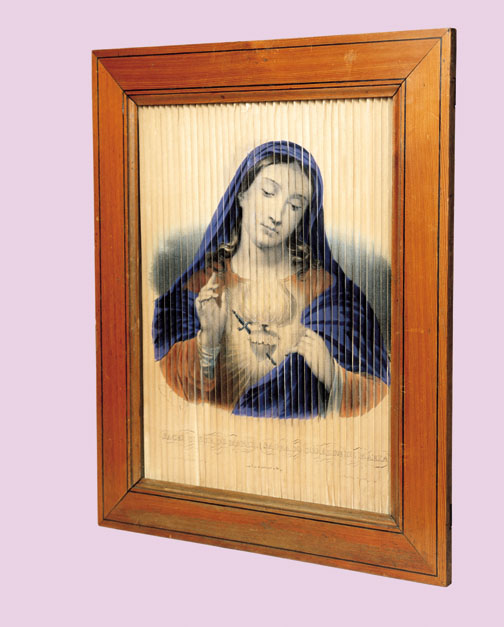
"A thaumatrope is a toy that was popular in Victorian times. A disk or card with a picture on each side is attached to two pieces of string. When the strings are twirled quickly between the fingers the two pictures appear to combine into a single image due to persistence of vision.
The invention of the thaumatrope is usually credited to either John Ayrton Paris or Peter Mark Roget. Paris used one to demonstrate persistence of vision to the Royal College of Physicians in London in 1824. He based his invention on ideas of the astronomer John Herschel and the geologist William Henry Fitton, and some sources attribute the actual invention to Fitton rather than Paris. Others claim that Charles Babbage was the inventor.
Examples of common thaumatrope pictures include a bare tree on one side of the disk, and its leaves on the other, or a bird on one side and a cage on the other. They often also included riddles or short poems, with one line on each side.
Thaumatropes were one of a number of simple, mechanical optical toys that used persistence of vision. They are recognised as important antecedents of cinematography and in particular of animation.
The coined name translates roughly as "wonder turner", from Ancient Greek: θαῦμα "wonder" and τρόπος "turn"."
http://en.wikipedia.org/wiki/Thaumatrope"Two-way and Three-way Pictures
A form of vertical montage.
Two-way pictures date back to the seventeenth century.
Initially they were made from spars with a triangular cross-section; later, accordion-pleated card was used. Both methods produced a background of vertical angled planes facing in opposite directions. Alternating picture ‘strips’ with different scenes or images were painted or glued onto the spars. Viewed from the front they make no sense. The two images only resolve when they are viewed from one side or the other. Whether one looks from the right or the left, only one of the two images will be visible as a complete picture. This technique enjoyed its widest popularity in the nineteenth century. The preferred motifs were predominantly religious, with combinations such as Crucifixion/Resurrection or Jesus Christ/The Holy Virgin. The same tradition also includes three-way pictures known as trisceneoramas. The three pictures are again painted as strips: a recessed ‘central picture’ with the other two pictures on the strips forward and to either side of the back strips. Seen from the front, the main motif is visible; seen from the sides the other two paintings are revealed, their themes generally connected with that of the main motif. "




No comments:
Post a Comment